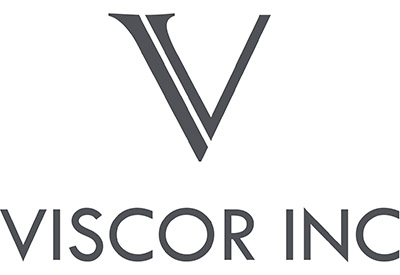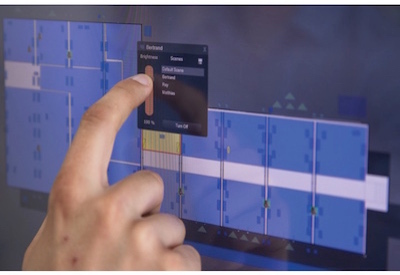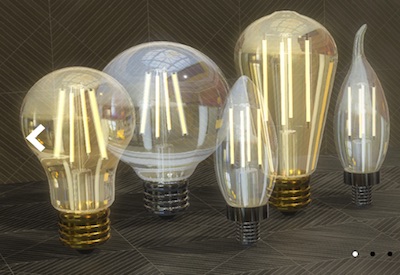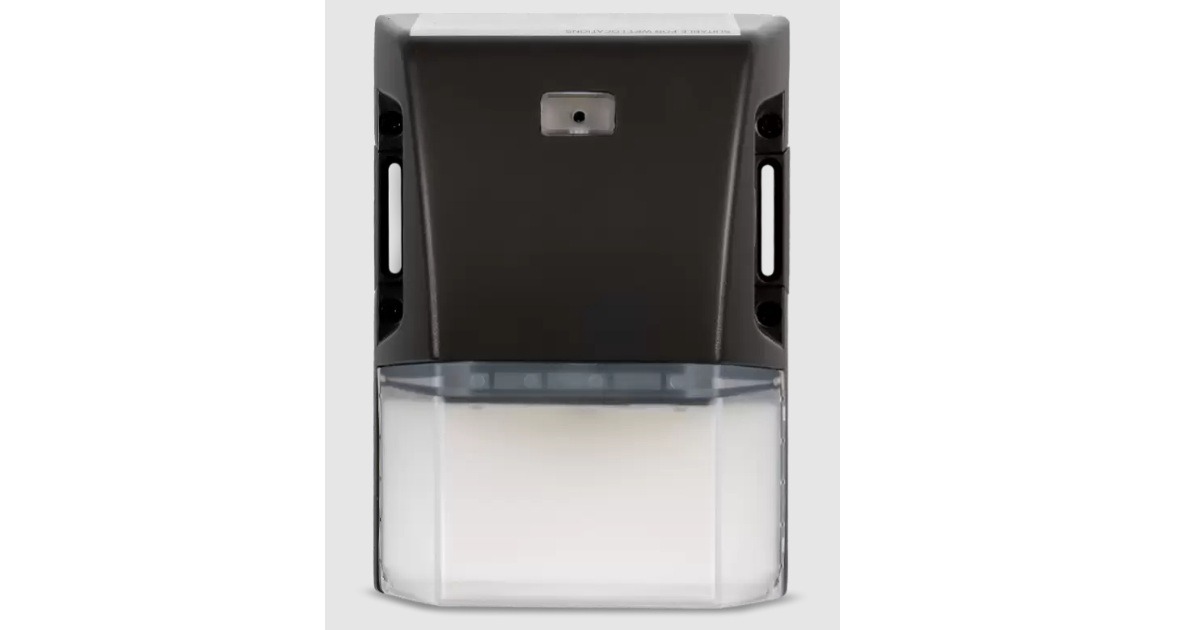The Future of Lighting Has Arrived. Expect More!

Sometimes it makes sense to go “Back to the Future,” so to speak, in order to have a better perspective. In this case, to Tucson, Arizona in 1998, where Wendell Strong attended a meeting that foresaw much of what has come to bear in the lighting market.
Wendell has been in the lighting industry for many years and has used his insights as a lighting distributor and a manufacturer. Today he is the GENISYS PoE Lighting Manager for Innovative Lighting, and past president of The National Association of Innovative Lighting Distributors (NAILD)
Here’s an excerpt from a recent article by Wendell that serves as a companion piece to an article that I shared with CEW readers in a previous issue, How PoE Lighting Technology Will Affect Distributors. The article begins with that 1998 meeting. I’ve added commentary in italics.
*******************
A gathering is occurring of stakeholders in the lighting world. About 60 people are about to participate in a brainstorming session. It is the second meeting launching “Vision 2020 — The Lighting Technology Roadmap” being hosted by the DoE (U.S. Department of Energy). Yours truly is in the room as a participant. (Interestingly, NAED, NAILD, NEMA and NEMRA are mentioned in the report as sponsoring associations and assisted in identifying participants. Participating companies are mentioned in the report and many of the actions/deliverables mentioned in the report have come to fruition.)
It was one of the most fascinating lighting events I have ever been a part of. As we were identifying the multiple disconnects that were preventing lighting technology from being more quickly adopted, a woman in the back of the room asked a question that still resonates with me to this day: “Why do we insist on selling lighting as if it were an ice cream cone and basing its value on how many calories it contains?”
The room remained quiet in a moment of reflection and self condemnation it seemed.
How did lighting get reduced to being a base commodity being treated both then and now primarily as a cost per square foot proposition?
Why do I raise this point? Even though PoE Lighting technology is easily capable of saving 90% in energy, and reduces installation time and ongoing maintenance costs while creating a level of intelligence and ease of control which results in greater energy savings across time, we are still missing the point.
While interior lighting has been relied on by humans for comfortable and appealing settings in many venues from hospitality, education, healthcare, retail, office and environments of all types, we seem to have forgotten what its most primary contributions are.
Basic functions of lighting
The two most basic functions of lighting date back to prehistoric times and the discovery of fire, which provided both safety and productivity to early humans. PoE Lighting technology can help us take those basic functions to a whole new level.
In a commercial building which is more, the utility costs including lighting or the employees working under the lighting? A pretty simply question, but one we should consider further.
Employees typically account for 90% of a company’s operating costs. Typically, operating costs break down as 1% for utilities, 9% for rent, and 90% for salaries and benefits.
We have known for decades that poor lighting has negative impacts on safety, performance and productivity. Additionally, numerous studies show when workers are asked what they would change about their personal work-space, over 50% wish to improve their lighting first and foremost. Up to now, the design standard in office lighting might be best described as only adequate. (Similar to an energy audit, perhaps companies could consider offering a productivity improvement audit that asks employees about their environment and what they would like changed. Perhaps this helps takes the emphasis off cost savings and more to productivity benefits, which will become important as there are fewer conversions to LED and companies transition to their LED 2.0 installation.)
What if we could harness the power of the PoE lighting control system, which is paying for itself on the energy consumption side of the business, and apply it to production side and take merely adequate lighting to personally optimized lighting?
Personally optimized lighting
What if a menu of positive lighting attributes were available to employees who then could pick and choose from them in order to customize their workspace on demand to their suiting?
Or, in healthcare, patients could control the lighting in their room, and doctors/nurses could override for treatments?
With the basic capability of changing both the colour and intensity of the light, the employee is empowered to “dial in” their lighting to changing tasks as well as their personal preference for the ambiance of the workspace.
For example, I am writing this article under warm colour lighting (3000k) at low intensity (35%), as that is the combination that works best for me when being creative. My overall preferred colour for detailed work is 5000K, however I normally run Daylight Rhythm (auto sunrise to sunset colour and intensity control) as my default setting. Any changes are made from my smart phone, in seconds. It’s that simple and that easy.
I referenced Vision 2020 at the beginning of this article and I want to leave you the final Vision Statement itself as we are a mere 2.5 years away from that date.
“In 2020, lighting systems in buildings and other applications will
- enhance the performance and well-being of people
- adapt easily to the changing needs of any user
- use all sources of light efficiently and effectively
- function as true systems, fully integrated with other systems rather than as collections of independent components
- create minimal impacts on the environment during their manufacturing, installation, maintenance, operations, and disposal
As a result, people will understand, value, and utilize the tangible, personal benefits provided by these lighting systems.”
It would appear that PoE Lighting technology is well positioned to be the driver toward the embodiment of Vision 2020. Sometimes history is the best predictor of the future, especially when it planned to be. Expect more from your lighting system. Much more.
*******************
Thank you Wendell for a thought provoking series.
So, with the potential of lighting becoming much more and, could we say, more of a “utility” than a light source, what could this mean relating to
- the need to understand multiple lighting technologies and their benefits?
- knowing when to invest, as a distributor, into different sales processes and customer bases, or preferring to wait and “service” customers?
- the future role of distribution. (yes, there will be one, but the question becomes, “What percent of lighting sales will continue through traditional electrical and lighting distributors?” and then the following question becomes “What does this mean for electrical and lighting distributor profitability?”)
- manufacturer go-to-market / future channel strategies? And the need to enhance / expand their marketing efforts?
- distributors segmenting their customer bases, or perhaps their geographic markets, to sell and market differently based upon different end-user criteria. We also call this “follow the money”, which then requires adaptation of initiatives or knowingly abandoning some segments.
How else could this impact the future of lighting within the electrical industry? Will lighting be 30% (roughly) of industry sales in the next 10 years? The next 20 years?
Your thoughts?
David Gordon is President of Channel Marketing Group. Channel Marketing Group develops market share and growth strategies for manufacturers and distributors and develops market research. CMG’s specialty is the electrical industry. He also authors an electrical industry blog, www.electricaltrends.com. He can be reached at 919-488-8635 or dgordon@channelmkt.com.












